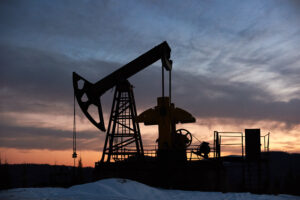Introduction
Aliko Dangote’s journey from a local trader to the architect of Africa’s largest privately owned industrial empire is a compelling tale of ambition, strategic vision, and patriotism. Africa has long grappled with the conundrum of abundant natural resources but limited industrial capacity, and the emergence of the Dangote Group is increasingly being viewed as a daring solution to that conundrum. Established on a model of self-financed, owner-operated, multi-sector dominance, the Dangote Group is now paving the way to potentially join the ranks of major global industrial giants like Blackstone, Reliance Industries, and General Electric. What sets it apart is not just its size or reach, but the fact that it is still firmly anchored in African soil, African challenges, and African hopes.
The thought of an African-owned, African-operated corporation with a vertically integrated supply chain encompassing oil and gas, cement, fertilisers, consumer goods, and logistics, would have appeared wildly optimistic just 30 years ago. Today, however, the Dangote Group’s extensive presence throughout Africa and its historic $20 billion investment in the Dangote Refinery indicate that the continent is seeing something never seen before: the emergence of a fiercely competitive industrial behemoth anchored by African capital and run by an African entrepreneur.
- The Evolution of the Dangote Group: From Trading to Transformation
The Dangote Group was first established in 1981 as a trading company that brought essential goods into Nigeria, including rice, sugar, and cement. After a brief study in Cairo, the young Aliko Dangote spotted the chance to address local needs at scale using seed capital from a relative. But gradually, industrial production—a more profound goal—took the place of the market model. Dangote started making investments in manufacturing by the late 1990s, starting with flour and sugar mills. Reducing Nigeria’s reliance on imports and generating employment through domestic production were his two main goals (Dangote, 2018).
Dangote Cement, which was introduced in 2005 as a result of Nigeria’s vigorous push for economic liberalisation, was the true breakthrough. Dangote Cement quickly spread throughout Nigeria and more than 10 African nations by taking advantage of its access to limestone and strategic knowledge of local building requirements. With more than 51 million metric tonnes of installed production capacity, it currently holds a dominant market position in Ghana, Ethiopia, Senegal, Tanzania, and Zambia in addition to over 60% of Nigeria’s cement industry (Dangote Cement, 2024).
This industrial transition was driven by two main principles: backward integration and regional expansion. Dangote did not just want to produce goods locally; he wanted to own the entire value chain—from sourcing raw materials to logistics and distribution.
- Building Blocks of a Pan-African Industrial Empire
– Commodities and Consumer Goods
The Dangote Group’s first large-scale success came in refining basic commodities. Dangote Sugar Refinery PLC and NASCON Allied Industries, producers of salt and other household goods, remain significant revenue contributors and have played a vital role in securing food-processing inputs domestically. These companies have helped reduce Nigeria’s import bill for basic foods while expanding rural supply chains.
- Cement and Infrastructure
Dangote Cement, listed on the Nigerian Exchange, represents the group’s most visible success and has a market capitalization exceeding ₦5 trillion (NGX, 2025). With plants across Nigeria, Senegal, Ethiopia, Zambia, and Tanzania, the company has leveraged Africa’s infrastructure gap to meet a surging demand for housing and public works. Cement exports to West and Central Africa have also grown, helping to reduce the continent’s reliance on European and Asian imports (Bloomberg, 2024).
- The Oil and Gas Gamble: Dangote Refinery and Petrochemicals Complex
Perhaps the boldest element of Dangote’s industrial strategy is the $20 billion Dangote Refinery and Petrochemicals Complex, located in the Lekki Free Trade Zone. With a planned capacity of 650,000 barrels per day, it is the largest single-train refinery in the world. When fully operational, the refinery is expected to meet Nigeria’s entire fuel consumption needs and still leave room for export to West Africa and beyond (Nwokocha, 2024).
Commissioned in May 2023 and now delivering products to the local market, the refinery aims to save Nigeria up to $10 billion in annual fuel imports and generate $5 billion in exports. The project has already created over 38,000 direct and indirect jobs and includes a 3 million tonne-per-year fertiliser plant, which is now one of the largest in Africa.
Financed through a mix of equity, commercial loans, and development finance, including a $1.35 billion facility from Afreximbank (Afreximbank, 2025), the refinery represents a major bet on Nigeria’s future. It is also a strategic move to control downstream energy infrastructure in a country that produces oil but lacks refining capacity. Dangote’s refinery is expected to reshape the region’s energy map, allowing Nigeria and its neighbours to reduce dependence on European imports and build domestic refining value chains.
- Logistics, Maritime Infrastructure, and Self-Sufficiency
Large-scale manufacturing and refining require more than factories and finance; they demand robust logistics. In response to Nigeria’s chronic infrastructure gaps, the Dangote Group has invested heavily in its own logistics ecosystem. The company operates a fleet of more than 14,000 trucks, and controls a network of warehouses and depots across Nigeria and West Africa. It is also an equity partner in the Lekki Deep Sea Port, Nigeria’s first fully automated port facility.
These investments are not just cost-saving measures; they are strategic. By internalising logistics, Dangote has reduced dependency on inefficient public infrastructure while increasing control over distribution timelines, pricing, and market penetration. This model mirrors the operational ethos of global players like Reliance Industries, which controls its own supply chains from oil rigs to gas stations (PwC, 2023).
- Dangote and the World: The Blackstone and Reliance Parallel
When analysts compare the Dangote Group to Blackstone or Reliance, they are not merely speaking in metaphor. Like Blackstone, the Dangote Group manages a portfolio of diverse, capital-intensive businesses with long investment horizons. Unlike most African enterprises, which are either donor-backed or dependent on short-term trade cycles, Dangote has embraced large-scale, debt-financed industrialization.
Moreover, the group integrates value chains from upstream to downstream—like Reliance Industries in India, which operates across oil refining, petrochemicals, telecoms, and retail (PwC, 2023). This operational integration reduces risk, improves margins, and gives Dangote greater control over pricing, supply, and delivery—advantages that are especially crucial in Africa’s volatile regulatory and economic environment.
This control has enabled a long-term investment horizon unusual in African markets, where many businesses are short-term and donor-reliant. It has also enabled bold decisions: Dangote can spend billions on infrastructure, wait years for returns, and pivot across sectors without worrying about quarterly earnings calls. This flexibility, combined with state support and protectionist policies, has been instrumental in the group’s growth.
- An African Vision: Ownership, Sovereignty, and Industrial Policy
What distinguishes Dangote’s approach is its deep African orientation. While many African multinationals are foreign-owned or heavily donor-backed, Dangote’s empire is funded largely through domestic and African capital. His ownership of key industrial assets reflects a commitment to African economic sovereignty—the idea that Africans must own the industries that serve their needs and shape their futures.
In this sense, the Dangote Group is more than a business. It is a platform for national and regional development. The Nigeria-Morocco Gas Pipeline, the refinery, and regional cement exports all speak to a pan-African economic strategy that goes beyond national borders. It aligns closely with the African Union’s Agenda 2063, which identifies industrialisation, infrastructure development, and regional integration as pillars of Africa’s transformation (AU, 2023). Dangote’s investments in cement plants across borders, pipeline projects, and export terminals all speak to a regional integration strategy built on infrastructure, not ideology.
- Policy Alignment and Pan-African Diplomacy
Dangote’s industrial strategy is tightly woven into Nigeria’s broader economic policies. Successive administrations have leaned on his projects to support job creation, reduce import bills, and boost foreign exchange earnings. But his influence extends beyond Nigeria.
The Nigeria-Morocco Gas Pipeline project, where Dangote has expressed strong interest, will link Nigeria’s gas reserves to Morocco and eventually to Europe, passing through more than 10 West African countries. This mega-project is a strategic opportunity to deepen energy integration and unlock regional value chains.
Similarly, Dangote’s fertiliser exports to countries like Brazil, India, and across West Africa are creating new diplomatic and trade channels that transcend traditional aid-based relationships. As more African countries shift toward industrial policies, Dangote’s footprint is likely to become a model for what private sector-driven regional development could look like.
- Institutional Risks, Transparency, and Criticisms
Operationally, the sheer size of the group’s projects, especially the refinery, has exposed it to risks in supply chain management, cost overruns, and regulatory delays. Critics have pointed out the monopolistic tendencies of the group and its close relationship with government. Transparency around subsidies, tax holidays, and forex allocations have also drawn scrutiny from civil society groups (BudgIT, 2024).
Civil society groups have also raised concerns about environmental impacts, labour conditions, and the group’s tax responsibilities (BudgIT, 2024). Furthermore, the group’s debt-driven growth model, while bold, exposes it to risks from currency fluctuations and interest rate spikes. The volatility of the naira and Nigeria’s foreign exchange regime pose real risks to the sustainability of such highly leveraged projects.
Yet, the group has been quick to adapt. It recently completed a major debt restructuring programme that localised nearly 95% of its liabilities in naira, protecting it from exchange rate volatility (Airtel Africa, 2025).
Still, the group has shown resilience. In response to infrastructure bottlenecks, it has doubled down on self-sufficiency, including investing in a private road network and independent power generation. The planned listing of the Dangote Refinery on the Nigerian Exchange will mark a strategic pivot toward broader public ownership, allowing ordinary Nigerians to participate in its success (The Punch, 2025).
- Future Outlook: Green Energy, Public Listings, and Beyond
As global markets shift toward sustainability and decarbonisation, Dangote is also adjusting. The group has expressed interest in compressed natural gas (CNG), green hydrogen, and solar-powered industrial facilities. It is exploring opportunities in East Africa, particularly in logistics corridors linked to mineral processing and agricultural exports.
The anticipated public listing of the Dangote Refinery on the Nigerian Exchange marks a new chapter. It will open ownership to institutional and retail investors and may offer new governance frameworks. For many Nigerians, this presents a rare chance to own a stake in a company that has come to symbolise national pride.
Meanwhile, the group’s strategy appears firmly pan-African. Plans are underway to build export terminals in Côte d’Ivoire and Senegal, expand fertiliser distribution in the Sahel, and deepen maritime logistics across the Gulf of Guinea.
Conclusion
There is more to the Dangote Group than meets the eye. It is the most obvious indication of Africa’s ability to construct, own, and run large-scale, intricate, capital-intensive infrastructure. The dependency patterns that have traditionally characterised African growth are compellingly replaced by Aliko Dangote’s model of patient capital, regional integration, and full value chain management.
By forging this route, Dangote has not only created the most powerful economic empire in Africa, but he has also changed people’s perceptions of what is feasible. He has shown that Africa can not only compete but also take the lead in determining the industrial destiny of the Global South if it has the correct combination of ambition, policy alignment, and execution.
References
African Union (AU). (2023). Agenda 2063: The Africa We Want. African Union Commission. https://au.int/en/agenda2063/overview
Afreximbank. (2025). Afreximbank supports Dangote Refinery with $1.35 billion financing facility. https://afreximbank.com
Airtel Africa. (2025). Q2 Financial Report: Local Currency Debt Strategy Update.
Bloomberg. (2024). Dangote Cement Expands Exports as Regional Demand Grows.
BudgIT. (2024). State of Transparency in Nigeria’s Industrial Sector. Lagos: BudgIT Foundation.
Dangote Cement. (2024). Annual Financial Report. https://dangotecement.com
Dangote, A. (2018). Keynote Address at the African Industrialisation Summit. Lagos, Nigeria.
Nwokocha, C. (2024). Inside Dangote’s $20 Billion Bet on Nigeria’s Oil Future. The Guardian Nigeria.
PwC. (2023). Emerging Market Conglomerates: The Reliance and Dangote Playbook. PricewaterhouseCoopers.
The Punch. (2025). Dangote Refinery Listing to Open Ownership to Nigerians.





